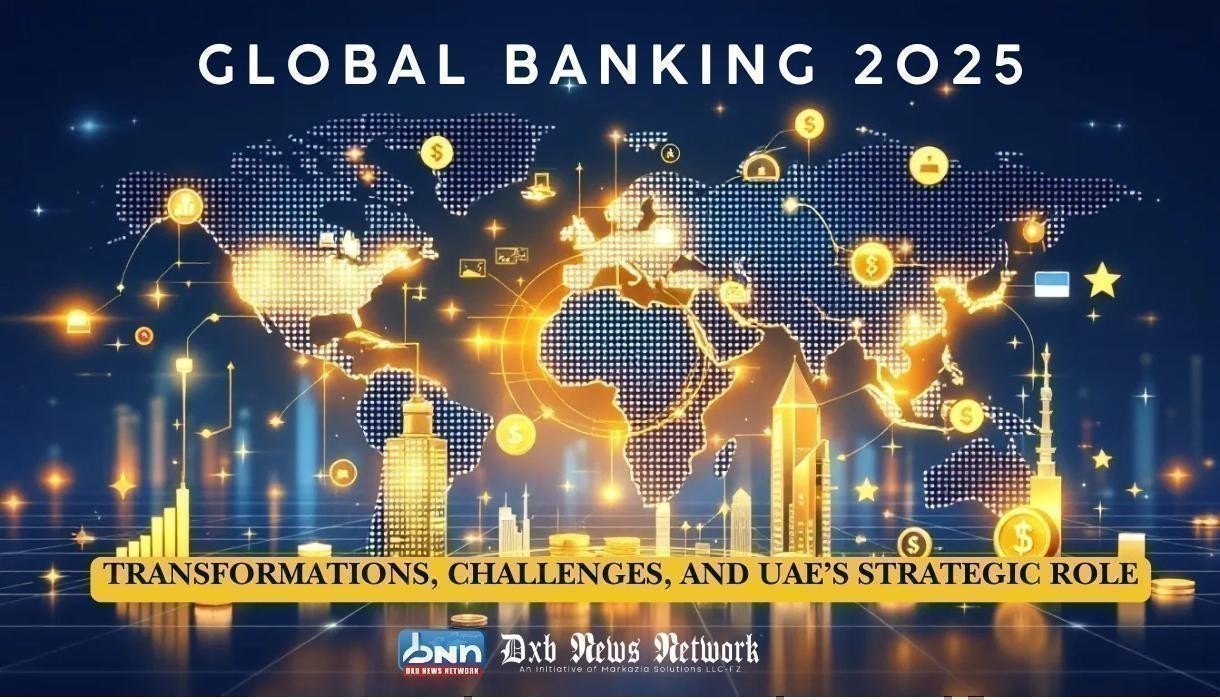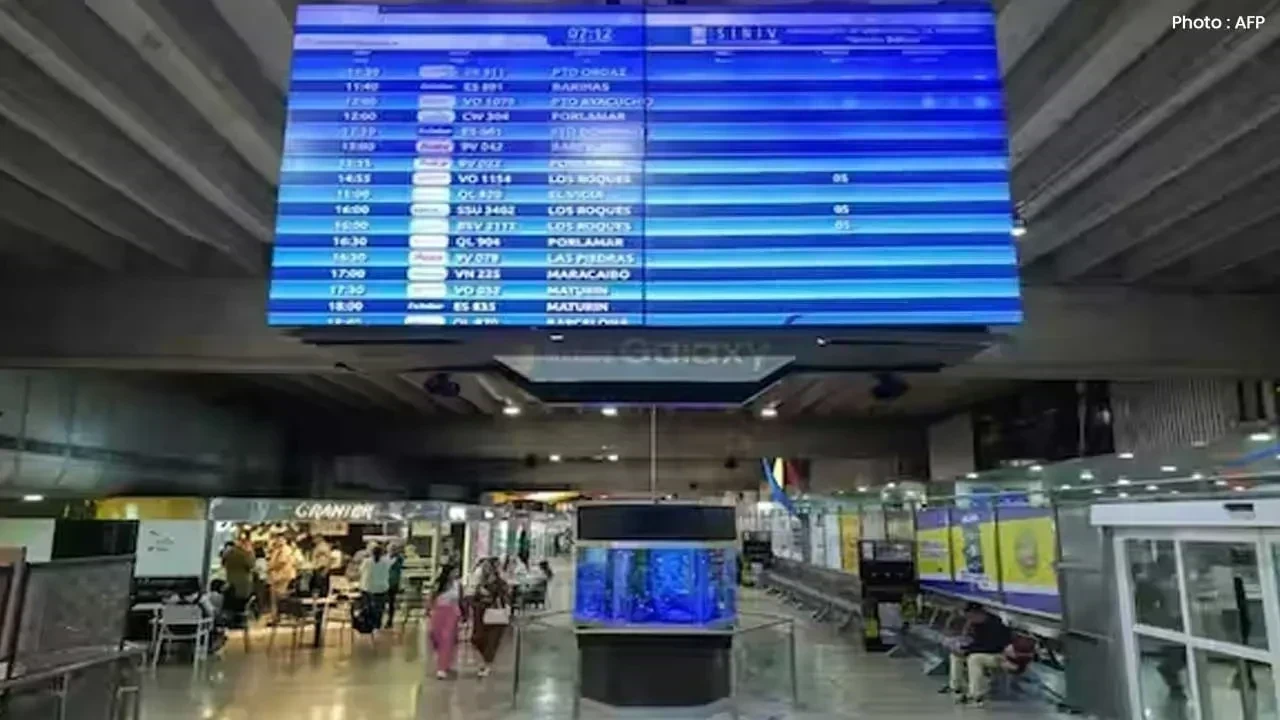
Post by : Michael Darzi
The banking sector in 2025 is undergoing one of the most transformative shifts in modern financial history. Unlike past disruptions, which were driven by regional crises or isolated technological changes, today’s transformation is global, structural, and multi-dimensional. It is influenced simultaneously by technology adoption, regulatory tightening, sustainability mandates, and shifting flows of capital between developed and emerging markets.
Industry Revenues
The size of the global banking industry is expanding at a pace that underscores both resilience and adaptation. According to McKinsey’s Global Banking Annual Review 2024, total industry revenues reached $6.5 trillion in 2023, with a compound annual growth rate (CAGR) of 7.1% since 2020—a period when banks faced post-pandemic headwinds, tightening interest rates, and geopolitical uncertainty. By 2025, revenues are projected to rise to $7.5 trillion, with net profits expected to cross $1.3 trillion.
Key drivers include:
Digitization is no longer a competitive advantage—it is the industry standard. A World Bank 2024 survey found that 75% of global banks already deploy AI-driven models in risk assessment, fraud detection, and personalized client engagement.
For UAE relevance: Fully digital banks such as Zand, Wio, and Liv. have shown that digitization is not confined to retail banking; even corporate and SME lending is shifting to mobile-first platforms.
International payment systems are witnessing a historic transformation, with cross-border transaction value expected to surpass $250 trillion by 2030 (BIS, 2024).
Asia & Emerging Markets
The Asia-Pacific (APAC) region has emerged as the center of gravity for global banking growth. With its combination of rapid economic expansion, financial innovation, and large unbanked populations entering the formal system, APAC is projected to shape nearly half of the world’s incremental banking revenues by 2025.
Financial Inclusion
Despite APAC’s wealth growth, financial exclusion has historically been high. However, mobile banking and microfinance are rapidly closing the gap.
For UAE link: The UAE is among the top 3 remittance-sending countries globally, with over $50 billion annually flowing mainly to India, Pakistan, Bangladesh, and the Philippines—directly tying the Gulf economy to Asia’s financial inclusion story.
China and India together represent the largest pool of digital banking users in the world, accounting for over 40% of all global digital banking customers.
The United Arab Emirates (UAE) is no longer simply a regional hub; it is steadily building its reputation as a global financial powerhouse, linking capital flows between Asia, the Middle East, Europe, and Africa. The country’s proactive regulatory frameworks, diversified economy, and investment-friendly ecosystem are consolidating its role as a critical node in global finance.
While the UAE and global banking sector are experiencing robust growth, several challenges must be addressed to ensure long-term resilience.
The next five years are set to reshape global and UAE banking in ways that will define the sector for decades.
The global banking sector is being redefined by the interplay of technology, regulation, and sustainability imperatives. Opportunities in digital transformation, Islamic finance, and cross-border capital flows far outweigh the challenges of regulatory compliance and cybersecurity.
For the UAE, the trajectory is clear: from a regional hub, it is evolving into a global banking epicenter, leveraging its innovation-driven ecosystem, forward-looking regulations, and strategic geographic position. The UAE’s banking sector is not only keeping pace with global transformations but is actively shaping them—cementing its role in the future of global finance.
This article is intended solely for informational and educational purposes. The financial data, market figures, and forecasts mentioned are drawn from publicly available reports, research papers, and recognized international institutions (such as IMF, World Bank, BIS, PwC, McKinsey, and UAE Central Bank). While every effort has been made to ensure accuracy, DXB News Network does not guarantee the completeness or timeliness of the information provided.
The content should not be interpreted as financial, investment, or legal advice. Readers are advised to consult qualified professionals or official regulatory sources before making any financial decisions. DXB News Network and its authors shall not be held responsible for any direct or indirect consequences arising from the use of this publication.
All views expressed are presented in compliance with UAE and Dubai media guidelines, and the article is designed to provide a neutral, fact-based perspective on global and regional banking developments.

Famous Irish Designer Paul Costelloe, Princess Diana’s Stylist, Dies at 80
Irish fashion icon Paul Costelloe, known as Princess Diana’s personal designer, has passed away at 8

Seven Arrested in India After Police Solve $800,000 Bank Heist
Police arrest seven suspects after cracking $800,000 bank heist in India. Most stolen cash recovered

Actress Adah Sharma Grandmother Passed Away
Adah Sharma’s beloved grandmother passed away in Mumbai. Fans and the entertainment world send heart

Earthquake of Magnitude 3.9 Hits Bhutan
A 3.9 magnitude earthquake struck Bhutan recently Learn about the quake, risks in the Himalayan regi

X launches “About This Account” feature to spot fake profiles easily
X’s new feature shows account age, location, and username changes to help users find real profiles a

Australian Man Deported After Rushing Ariana Grande at Singapore Premiere
An Australian man jailed for rushing Ariana Grande at Singapore’s "Wicked" premiere was deported and

International Airlines Cancel Venezuela Flights After US Warns of Danger
Several airlines cancel flights to Venezuela after the US issues a safety warning due to rising mili

Taijul Islam Becomes Bangladesh’s Top Test Wicket-Taker
Taijul Islam became Bangladesh’s leading Test wicket-taker with 248 wickets, surpassing Shakib Al Ha

Bavuma Becomes Second-Fastest SA Captain to 1,000 Test Runs
South Africa skipper Temba Bavuma reaches 1,000 Test runs in 20 innings, second-fastest after Graeme

Indian Shuttler Lakshya Sen Beats Chou Tien Chen in Semifinal
Lakshya Sen beats world No. 6 Chou Tien Chen in a thrilling 3-game semifinal to reach Australian Ope

Manuel Arias Banned by FIFA Weeks Before 2026 World Cup
FIFA bans Panama football president Manuel Arias for six months and fines him for not respecting a p

France to Face Brazil and Colombia in World Cup Friendly Games
France will play friendly matches against Brazil and Colombia in March 2026 in the US, ahead of the

Australia Win First Ashes Test with Travis Head’s Century
Travis Head scores 123 to guide Australia to an eight-wicket win over England in Ashes opener. Head

Australia Crush England in First Ashes Test at Perth Stadium
Australia stunned England in the first Ashes Test with Head's century and Starc and Boland taking ke

Sydney Sixers Beat Hobart Hurricanes to End Their Winning Streak
Sydney Sixers defeated the unbeaten Hobart Hurricanes by 11 runs, powered by Ash Gardner’s brilliant